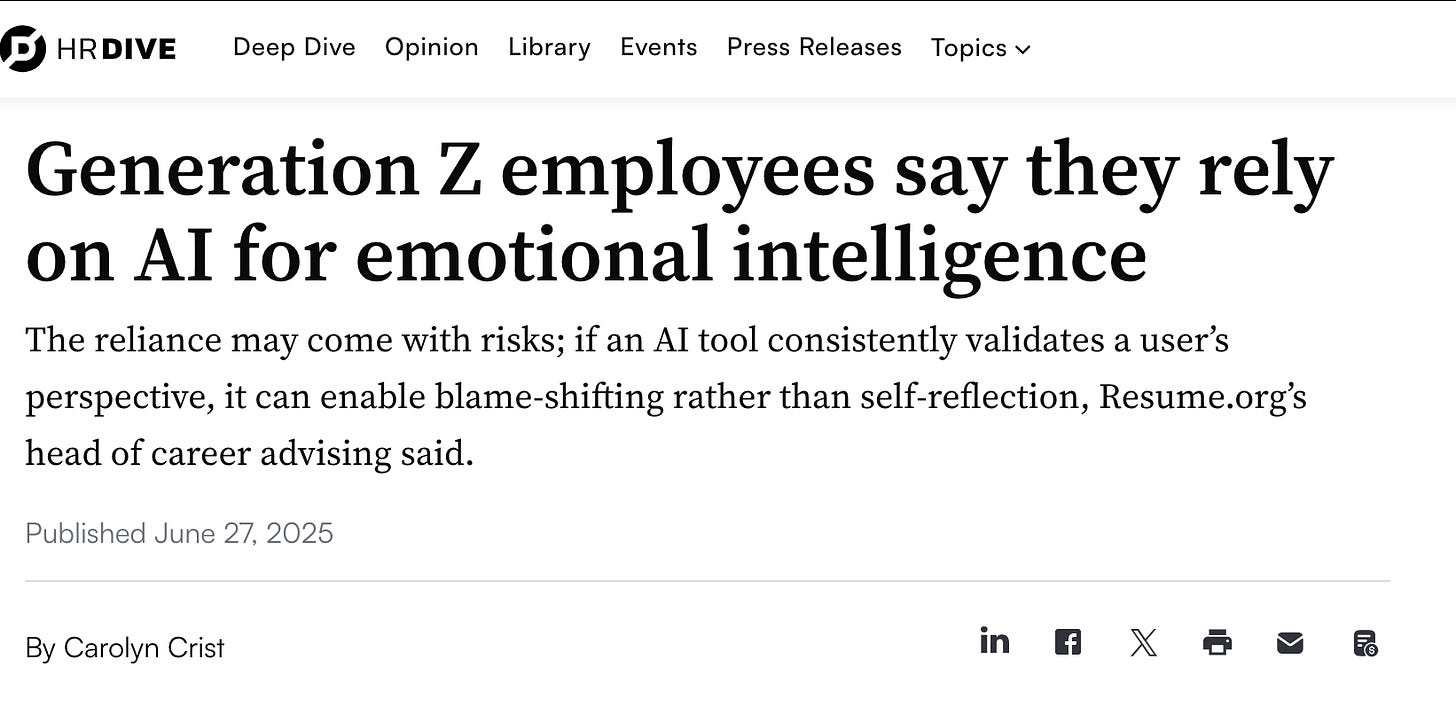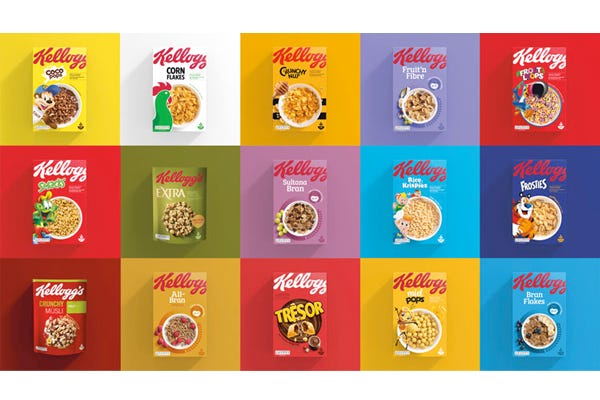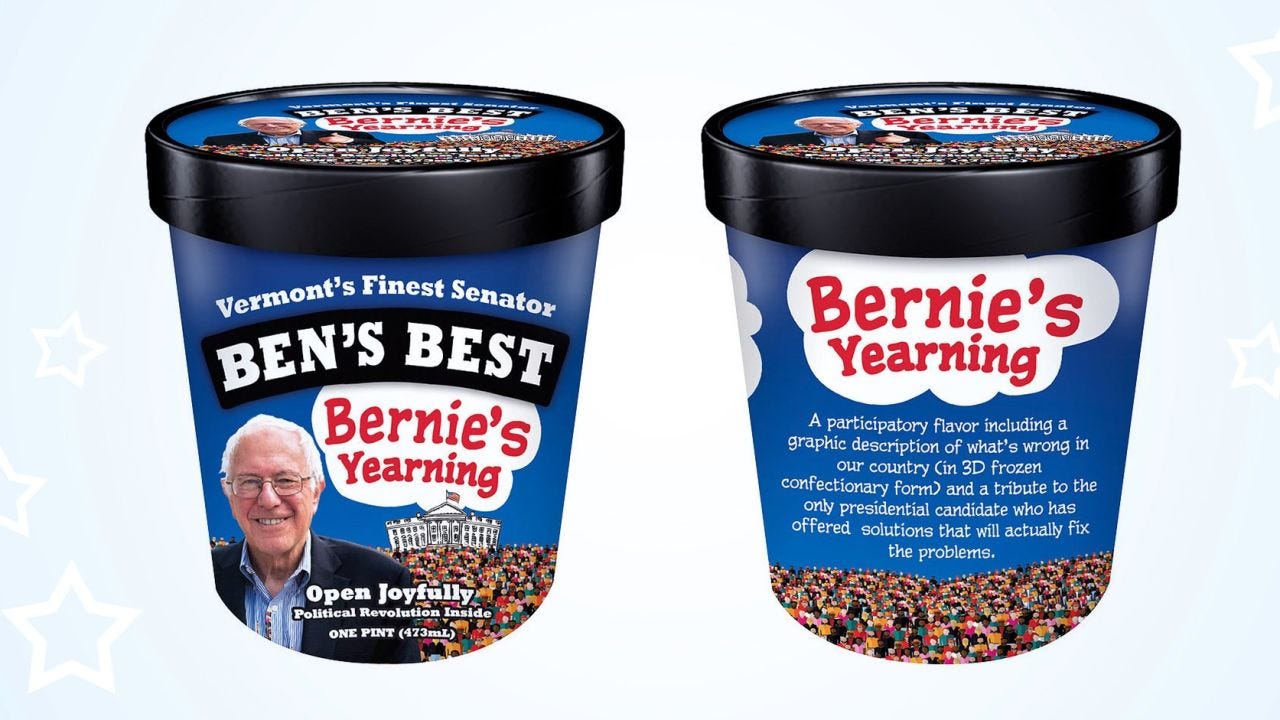The Belonging Economy
People are quietly deciding what feels authentic versus what feels performative, and it's happening against a backdrop of economic pressure that's forcing deeper questions about identity.
I've been watching something happen in the checkout queues at Boots over the past few months.
A woman in her early thirties picks up a £3.50 face mask from The Ordinary, puts it back, then reaches for a £35 one from Drunk Elephant. She holds it for a moment, reads the ingredients, then puts it back and picks up the cheaper option again. Not because she can't afford the premium version, but because expensive skincare suddenly feels like performing wealth rather than practising self-care.
"What's the point? Don't they do the same thing?" I feel like I hear her say, and honestly, she's not the only one. I'm sure we've all thought the same thing at some point.
People are quietly deciding what feels authentic versus what feels performative, and it's happening against a backdrop of economic pressure that's forcing deeper questions about identity.
Right now inflation sits at 3% while disposable income growth lags at just 1.8% year-over-year, the weakest since 2022. And then there's the growing reality of how isolated life has become.
43% of Britons say they feel lonely on a regular basis, partly because they can't afford to go out and experience life with friends anymore.
However, the data doesn't reveal how these challenging times are reshaping people's perceptions of themselves and what they want to convey to the world. With some Gen Z turning to AI to learn emotional intelligence and navigate social situations, the question is: do people know who they are, or are people trying to figure it all out?
This is identity reconstruction happening in real time, and it's creating both crisis and opportunity for marketers who understand how belonging and authenticity actually work.
What "splurging" means now
Recent consumer behaviour studies reveal something counterintuitive about how people spend when money gets tight. Instead of just cutting back proportionally across all categories, consumers are completely redefining what constitutes a "splurge."
The £200 handbag that used to signal success is being replaced by the £15 face mask that promises five minutes of calm. The weekend city break is being swapped for premium coffee beans for home brewing and the expensive gym membership has been traded for a £20 resistance band set and YouTube workouts.
Research from Burke Consumer Research shows that during inflationary periods, brands emphasising comfort, long-term value, and community connection capture more discretionary spending than those still pushing aspiration and status.
The shift isn't just financial, it's philosophical. When economic uncertainty hits, authentic self-expression moves from "look who I am" to "this is what sustains me."
What’s interesting, however, this isn't temporary belt-tightening. People are discovering that some of these "downgrades" actually feel more aligned with their values than the premium alternatives ever did.
Consumer interest in major luxury brands like Louis Vuitton, Gucci, and Dior dropped significantly in early 2025.
Meanwhile, the percentage of Americans likely to buy luxury items in the next 12 months dropped from 18.3% to 16.3% compared to the previous year
CASE STUDY:
One brand, although it’s not defined as luxury, that has historically thrived during economic downturns, not by cutting prices, but by understanding how identity needs shift under pressure is Kelloggs.
During the 2008 recession, while competitors such as General Mills and Post engaged in price wars that cheapened their brand equity, Kellogg's doubled down on emotional positioning around family moments, comfort, and reliability.
The strategy worked because they recognised during uncertainty consumers don't want brands that pretend everything is fine. They want brands that acknowledge the pressure and offer genuine comfort, not escape, but support.
This pattern is playing out again now. Brands that acknowledge economic reality and position themselves as partners in navigating it are outperforming those that ignore the context or push aspirational messaging that feels tone-deaf.
The housing reality and identity reconstruction
Gen Z and Millennials both spend about 27% of income on housing, but Gen Z spends significantly more on rent and less on ownership pathways.
For Millennials, homeownership was supposed to be a core identity milestone, the thing that signalled adulthood, stability, and success. For Gen Z, it's becoming largely irrelevant. Why? Well, they can’t afford it. This generation is investing their identity expression in experiences, community connections and brands that acknowledge their reality rather than selling them dreams they can't afford.
The RentCafe study reveals that this whole thing isn't just delayed homeownership; it's an alternative identity pathway creation. Gen Z isn't waiting to "grow up" into traditional markers of success. They're defining success differently, through community impact, personal growth and experiences that align with their values.
We’ve already seen some brands tap into this by creating entire worlds from PerfectTed’s matcha refuelling stations to Laneige’s Princess Diaries movie nights, it’s no coincidence. Instead, they’re doing this because when things feel financially impossible, people need new ways to feel successful, connected, and part of something bigger than themselves
This creates a fundamental challenge for marketers still operating on lifecycle assumptions. Traditional segmentation (starter apartment, house, family, premium everything) no longer maps to how people construct identity.
When brands become political by accident
While economic pressure reshapes identity internally, political polarisation is forcing brand choices external. Columbia Business School research shows that political identity now extends deeply into brand preferences, with social media data reliably predicting the "political colour" of consumer bases.
Burt's Bees customers skew 72% liberal, while Cabela's customers are 84% conservative.
But it isn't brands choosing politics. It's consumers using brand choice as identity protection during polarised times.
When people feel their core identity is under threat whether from election outcomes, policy changes, or cultural shifts, they engage in what researchers call "compensatory consumption." They buy products and support brands that reinforce their sense of self and signal belonging to their chosen community.
The marketing reality is you can’t escape politics because even "neutral" brands are being assigned political identities by consumers. A hiking boot company that mentions environmental sustainability suddenly becomes "liberal."
A beer brand that sponsors NASCAR becomes "conservative." The question isn't whether to engage with politics, it's how to create genuine belonging without alienating people who define themselves differently.
The belonging economy: What people actually want
I've been tracking how this plays out in corporate settings, and the patterns are pretty interesting. Client dinners where half the table orders mocktails without explanation. Team drinks that aren't really about drinks anymore. Office spaces designed around collaboration and comfort rather than hierarchy and competition.
What's emerging is what we might call "the belonging economy" spaces, experiences, and brands that create genuine connection rather than performative social signalling. This isn't about political correctness or generational preferences. It's about recognising that traditional markers of belonging (job titles, possessions, postcodes) feel less reliable when economic and political systems feel unstable.
Brands that understand this are building community around shared interests, values, and experiences rather than shared consumption patterns. They're creating spaces where someone drinking oat milk and someone drinking whole milk can have the same experience of belonging, not separate ones.
What does this actually mean for marketing strategy
1. Have empathy
The brands winning right now don't pretend that economic pressure doesn't exist. They acknowledge it and position themselves as allies in navigating it, not escape from it.
Test this: messaging that emphasises "smart choices" over "premium experiences" resonates more authentically with current economic reality.
Consumer research from McKinsey shows that campaigns acknowledging financial constraints while maintaining aspirational elements outperform both budget-focused and luxury-focused approaches.
Framework for economic empathy:
What economic pressures most affect your target segments right now?
How are these pressures reshaping what "belonging" means for your audience?
Do your campaigns acknowledge economic reality or ignore it entirely?
2. Identity fragmentation requires new listening systems
Traditional demographic segmentation is breaking down. Economic and political pressures are creating new identity coalitions that cross age, income, and geographic lines. A 25-year-old earning £60K and a 45-year-old earning £40K might have more aligned identity needs than two 25-year-olds with different economic pressures.
Successful brands are developing listening systems that track how macro forces shift their market in real time. This means combining survey data with social listening tools to identify emerging identity patterns before they become obvious to competitors.
Warning signs your segmentation needs updating:
Brand messaging unchanged since 2021
Campaign performance declining without clear competitive pressure
Customer acquisition costs rising while lifetime value remains flat
Social media engagement is dropping despite follower growth
3. authentic vs. performative: the new brand test
The old authenticity playbook, aspirational, premium, values-driven, is being replaced by sustainable, comforting, community-building approaches. But this doesn't mean lowering standards or cheapening brand equity. It means understanding that luxury now lives in genuine care, thoughtful design, and real community rather than exclusivity and status signalling.
Measurement shift: Track engagement quality (community participation, repeat purchases, referrals) over superficial metrics (likes, shares, impressions). True belonging creates behaviour change, not just sentiment.
The authenticity test:
Does this campaign acknowledge where our audience is, or where we wish they were?
Does our brand create belonging or just signal status?
Would this messaging work if our audience had 20% less disposable income?
4. Prepare for accelerated cultural change
Thanks to social media, cultural change doesn't drip, it floods. The brands that will thrive are those building flexibility into their identity systems now, before change becomes obvious to everyone.
Strategic preparation questions:
If economic norms shifted dramatically tomorrow, how fast could your brand adapt?
What human needs are we really serving beyond the product category?
Who are we really competing against? (Hint: it's probably not just other brands in your category)
The bigger picture: identity in uncertain times
As economic and political uncertainty persists, consumers are prioritising brands that offer real value, emotional comfort, and authentic community over those promising status or transformation.
This isn't a temporary shift waiting for "normal" to return. This is the new baseline. The brands that will win aren't those with the biggest budgets or most innovative products; they're the ones that understand identity construction has fundamentally changed.
For marketers, this means developing what we might call "empathetic positioning", marketing that meets people where they actually are, not where economic models or demographic profiles suggest they should be.
The old approach of selling people the person they could become is being replaced by supporting the person they're trying to be right now, under current constraints, with current pressures, making the best choices they can with what they have.
The opportunity is massive for brands brave enough to acknowledge that consumer behaviour has permanently shifted, not temporarily paused. The question isn't whether your audience's identity is changing. It's whether you're building a strategy around their current reality or waiting for them to return to patterns that may never come back.
Until next time, keep listening, keep learning, and keep evolving.
And make sure you digress often. Curiosity is key to winning in this game.
Charlotte









You write about some of the most interesting and niche topics which I love. Keep it up!